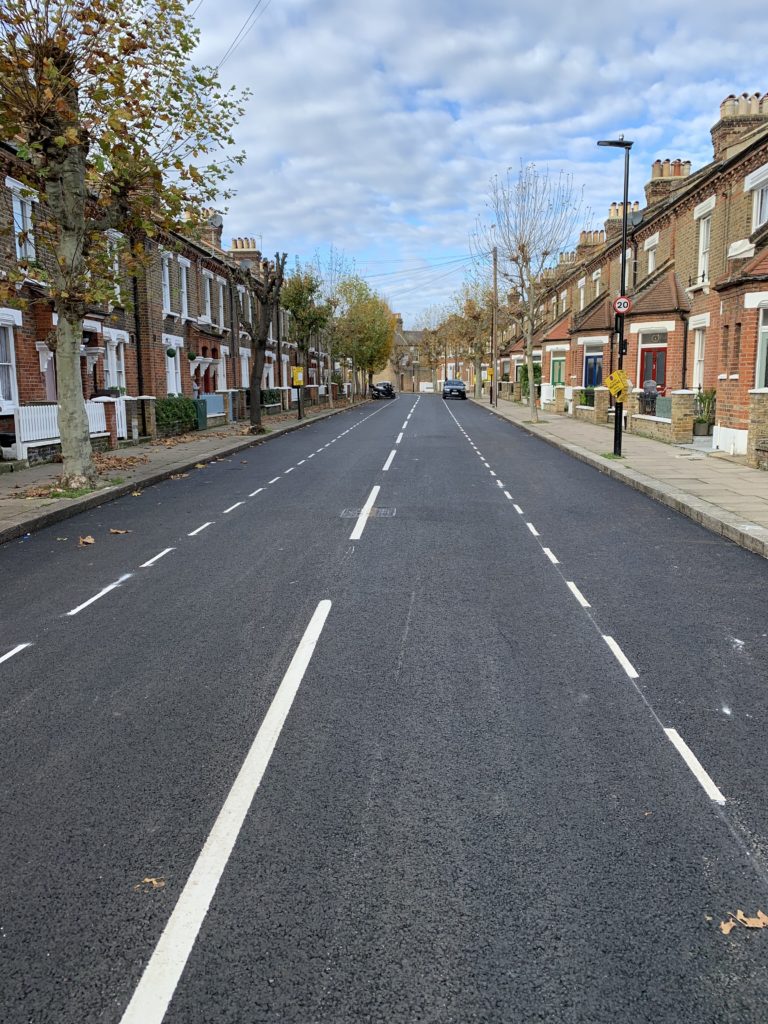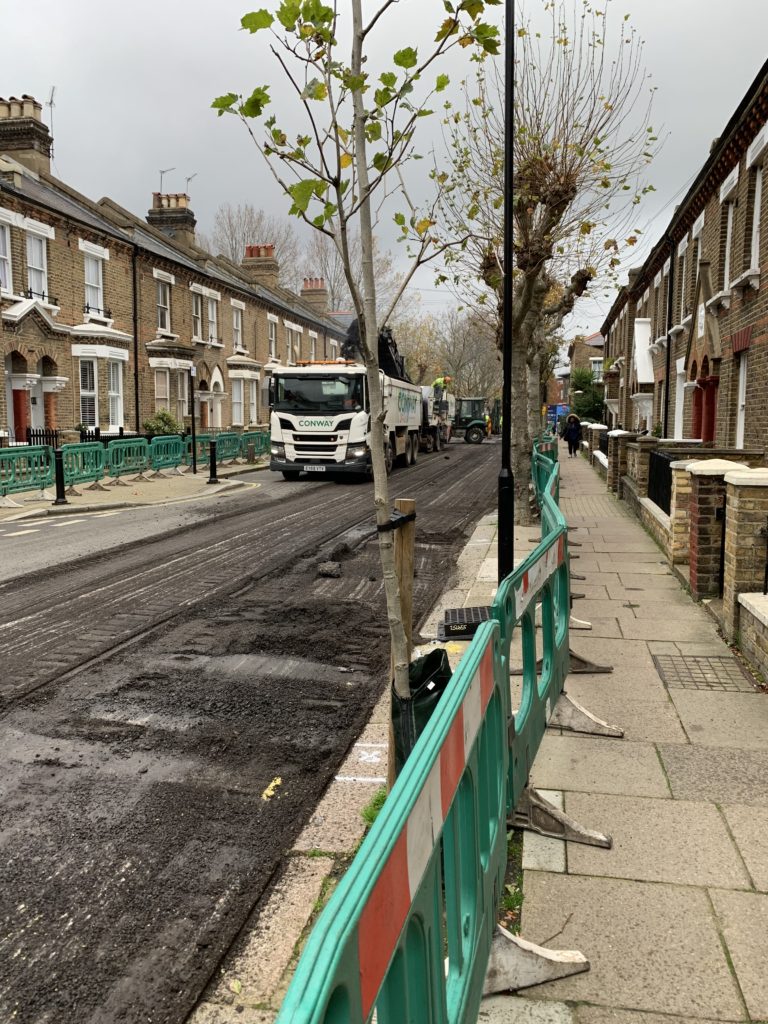Westminster City Council is driving down the carbon emissions associated with road maintenance as part of its target to be net zero carbon by 2030.
Working with FM Conway, it has laid a Warm Mix Asphalt (WMA) surface course containing 85% recycled material on Third Avenue in the Queens Park district.

A single layer solution, SureLayer® E, delivered the high recycled content as a combination of high Polished Stone Value (PSV), Reclaimed Asphalt Pavement (RAP) and ‘recovered aggregate’.
Mark Flint, Head of Technical at FM Conway, said: “This product is challenging conventions around the amount of RAP that can be incorporated in road surfaces and is also delivering carbon savings via the use of a more sustainable WMA technology.
“WMA is mixed and laid at a reduced temperature, which cuts energy usage and reduces the associated production carbon when compared to a traditional hot mix asphalt. As a result, the use of the combination of technologies in the overall scheme, including transport, has produced a 40% carbon saving.”

In total, the 760 tonnes of material supplied by FM Conway’s Heathrow asphalt plant were laid in a single layer by its surfacing division, which increased productivity and reduced the number of lorry movements by 55%.
“This has been a great collaborative scheme between FM Conway and Westminster City Council,” added Mark Flint.
“Together we have maximised the amount of locally sourced recycled materials, as well as reducing the number of vehicle movements through the use of single layer technology. This also decreased the time spent on site resulting in us handing back the street to Westminster and its residents in an efficient and timely manner.”
Phil Robson, City Highways Head of Operations, Westminster City Council, said: “This innovation supports the goal of achieving net zero carbon by 2030 while providing the durability we need to maintain our highways asset to the highest standards.”
Benefits of the 85% recycled material used in the Westminster scheme:
- High recycled content contributes towards a circular economy and a more sustainable construction method for treating carriageways.
- The use of SureLayer® E means the carriageway can be resurfaced in one pass, reducing time spent on site allowing the highway to be reopened sooner and limiting disruption to the community.
- WMA reduces energy consumption and embodied carbon.
- WMA can provide greater durability due to reduced ageing of the bitumen in the manufacturing process.
- An odour suppressant was used in the manufacturing and installation of the material, helping to deliver a reduction in odours for both operational staff and the wider public.

 CONTACT US
CONTACT US SUBSCRIBE
SUBSCRIBE FOLLOW US
FOLLOW US LINKEDIN
LINKEDIN